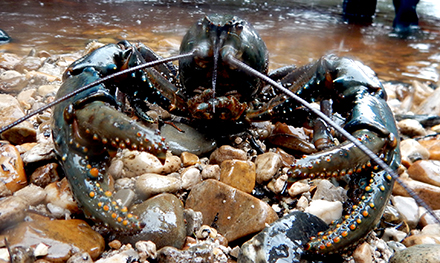Forest & Wood Products Australia has announced ground-breaking research that benefits the conservation of the threatened giant freshwater crayfish (Astacopsis gouldi) whilst supporting planning and harvesting practices for the forestry industry in Tasmania. Source: Timberbiz, photo The Naturalist
Led by a team of researchers including Amelia Koch, Leon Barmuta, and Alejandro Trujillo Gonzalez this study has developed a genetic assay utilising environmental DNA (eDNA) to detect the presence of A. gouldi in water samples.
These findings will not only help streamline monitoring efforts for the crayfish, but also offer valuable insights for forestry management practices.
“Although the giant freshwater crayfish is the world’s largest freshwater invertebrate, the species is cryptic in nature, preferring well-shaded waterway habitat with undercut banks. This research has the potential to underpin new monitoring methods that replace time-consuming and difficult manual monitoring, reducing costs and improving the safety of people undertaking the fieldwork,” Jodie Mason, FWPA’s Head of Forest Research, said.
Researcher Amelia Koch from the Forest Practices Authority said that this technique could facilitate the development of a population monitoring program, be used to conduct research on habitat associations of the species or the effectiveness of management actions, or to update management tools such as the habitat availability map used by the Tasmanian forest industry.
The research is part of a larger project aimed at enhancing biodiversity conservation and sustainable forestry practices in Tasmania, and includes research on Wedge-tailed eagles, Masked owls, Grey goshawks, Tamanian devils and quolls.
This comprehensive project (Project number: VNC457-1718 Sub-report 3), funded by FWPA through funds from Tasmanian forest managers, the Forest Practices Authority and the Australian Government, focuses on integrating innovative scientific techniques, such as eDNA analysis, to improve monitoring and management strategies for threatened species.
Read more and download the full report at https://fwpa.com.au/report/developing-a-method-to-survey-for-giant-freshwater-crayfish-using-edna/






